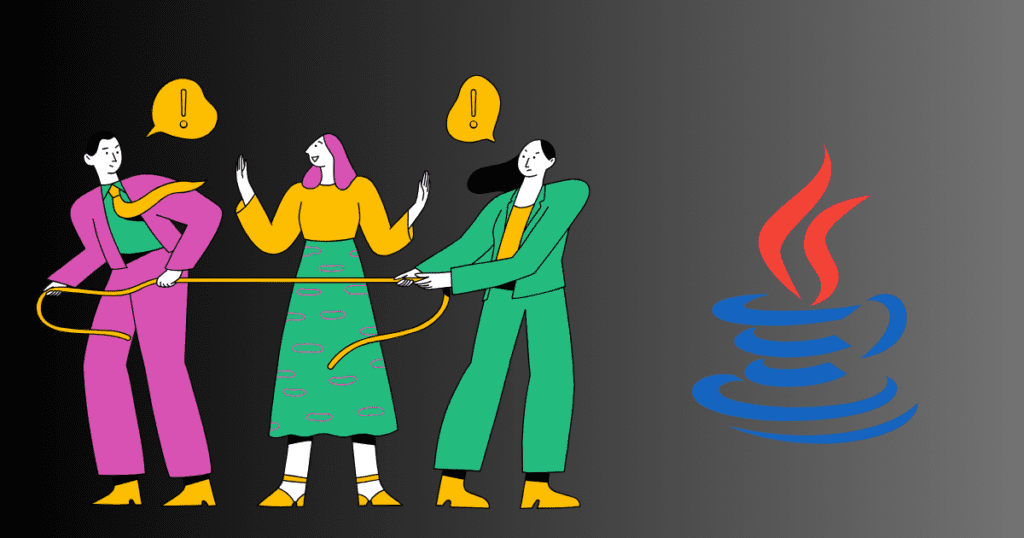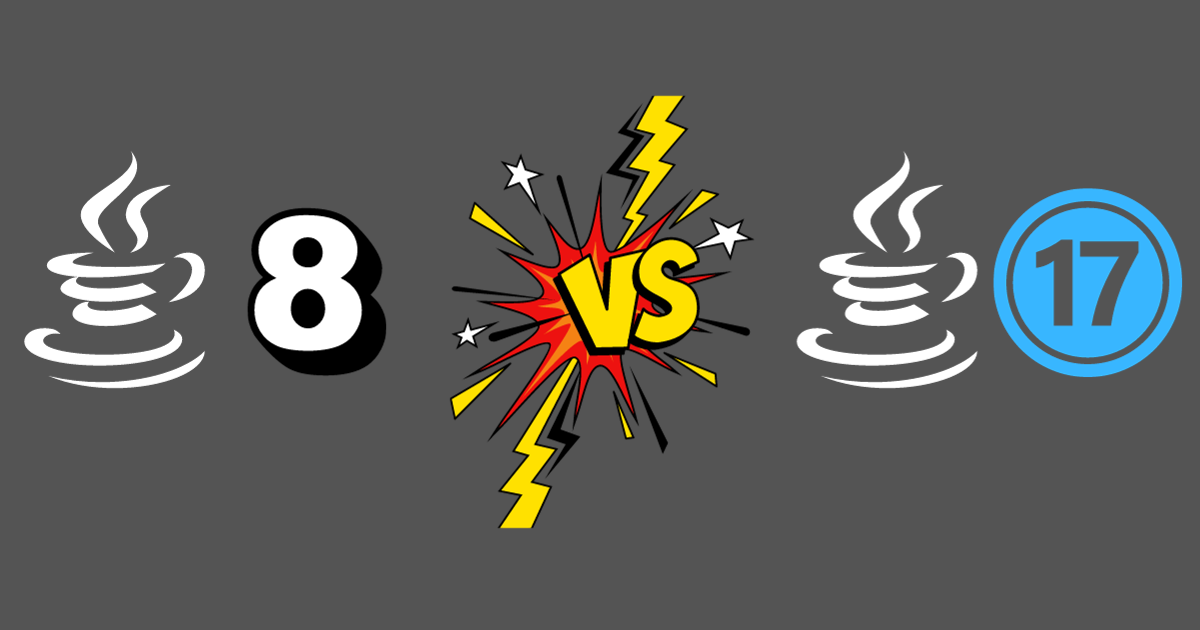Java is a popular programming language that has evolved since its inception in the mid-1990s. It is known for its write once, run anywhere (WORA) philosophy, which enables developers to write code that can run on any platform without recompilation. Over the years, Java has undergone significant transformations, with each version bringing new features and improvements to the language. In this article, we’ll delve into the evolution of Java, specifically comparing Java 8 and Java 17, two crucial milestones in its journey. From feature comparisons to considerations for developers, we’ll explore the nuances of these versions, aiding developers in making informed decisions on Java 8 vs Java 17.

Evolution of Java
Java was initially conceived in the mid-1990s by James Gosling and his team at Sun Microsystems. The language was designed for interactive television, but it quickly became apparent that Java had much broader applications. Java’s WORA philosophy made it a popular choice for developing cross-platform applications.
Over the years, Java has undergone significant transformations, with each version bringing new features and improvements to the language. These changes are aimed at enhancing the language’s capabilities, improving performance, and making it easier to use. Java 8, released in 2014, marked a significant departure from its predecessors by introducing lambdas and functional programming constructs. The update aimed to enhance readability and conciseness of code, offering developers new ways to approach problem-solving.
Fast forward to Java 17, the latest Long-Term Support (LTS) release. Java 17 builds upon the foundation laid by its predecessors, introducing features like records for concise class definitions and pattern matching for simplified code structures. Java 17 focuses on performance improvements, enhanced security, and features like Sealed Classes and Pattern Matching enhancements. This iteration solidifies Java’s standing as a language capable of addressing contemporary development challenges.
Key features and improvements
Java 8 brought forth many features, including the Stream API for efficient data manipulation, the Optional class for handling null values, and the Nashorn JavaScript engine. These additions transformed Java into a more expressive and modern language. Java 8’s lambda expression introduction revolutionized how developers write code, enabling a more functional programming paradigm. This concise syntax for writing anonymous methods has since become a staple in modern Java development.
Java 12 improved the switch statement, making it more versatile by allowing it to be used as an expression—this enhancement streamlined code and improved readability, improving the development process. Java 17 introduces records, a feature aimed at simplifying the creation of immutable data classes. Records reduce boilerplate code, making codebases cleaner and more maintainable. Building on the foundation laid by Java 12, Java 17 further refines pattern matching, allowing developers to express complex logic more accurately and concisely.
Performance and Security
Impact on application development
The evolution from Java 8 to Java 17 has significantly impacted application development, ushering in a range of features and improvements that enhance developer productivity, code readability, and application performance. The introduction of lambdas and the Stream API in Java 8 revolutionized how developers approach functional programming and streamlined the manipulation of collections. Applications built on Java 8 benefited from more concise and expressive code.
With the transition to Java 17, several features have further transformed application development. Project Panama’s integration of native code allows developers to seamlessly interact with non-Java libraries, expanding the possibilities for integration and performance optimization. The adoption of Sealed Classes improves code maintainability by restricting class hierarchies, providing a more secure and predictable development environment.
Pattern Matching for the switch statement in Java 17 simplifies conditional logic, enhancing code readability and reducing boilerplate code. These improvements not only make existing codebases more efficient but also enable developers to write more robust and maintainable applications.
Considerations for upgrading
When contemplating an upgrade from Java 8 to Java 17 (Java 8 vs Java 17), developers must consider factors such as existing codebase compatibility, potential benefits of new features, and the organization’s willingness to adapt to the latest technologies. Java 8’s features, including lambdas and streams, streamline code, enabling developers to express complex operations more succinctly. This enhances developer productivity by reducing boilerplate code. Java 17’s features, such as records and pattern matching, modernize development practices. These additions allow developers to write cleaner and more maintainable code, fostering increased productivity.
Tooling and support for developers
The Java development ecosystem provides robust tooling and support for both Java 8 and Java 17. Developers can leverage integrated development environments (IDEs) and build tools to enhance their workflow, regardless of the chosen version. However, newer features in Java 17 may require updated tooling, so developers must ensure that their toolchains are compatible with the latest version.
Don’t miss: What is Java Used For? The Positive Impact of Java in Software Development
Which one to use in the present time (Java 8 vs Java 17)?

Java 8 and Java 17 both have their strengths and are suitable for different use cases. Java 8 is a stable choice for enterprises prioritizing consistency and reliability. Its long-term support ensures that developers can continue to receive security updates and bug fixes, making it a safe option for mission-critical applications.
Java 17, on the other hand, introduces modern features that align with contemporary development practices. It offers better performance, enhanced security, and features like Sealed Classes and Pattern Matching enhancements. These additions allow developers to write cleaner and more maintainable code, fostering increased productivity.
Conclusion
In conclusion, the evolution from Java 8 to Java 17 represents a significant leap forward in the Java programming language, profoundly impacting the landscape of application development. Java 8’s introduction of lambdas and the Stream API revolutionized code structure and collection handling, laying the groundwork for more expressive programming.
Java 17, the latest LTS release, builds upon this foundation with features like Project Panama, enhancing native code integration for improved performance and interoperability. Sealed Classes and Pattern Matching contribute to code security and readability, reflecting a commitment to modern, maintainable development practices.
The LTS status of Java 17 solidifies its role as a stable and dependable choice, particularly for enterprise applications with long lifecycles. The advancements from Java 8 to Java 17 collectively enhance developer productivity, code efficiency, and application performance. While the transition may require adaptation, the benefits in terms of enhanced functionality and extended support make upgrading a strategic move for developers aiming to stay at the forefront of Java’s capabilities in the evolving landscape of software development.
Java 8 vs Java 17 FAQs
- 1. What are the key differences between Java 8 and Java 17?
- Java 8 introduced lambdas, the Stream API, and the java.time package for date and time. Java 17, the latest LTS release, features advancements like Project Panama for better native code integration, Sealed Classes for improved code security, and Pattern Matching for enhanced switch statements.
2. How does the transition from Java 8 to Java 17 impact performance in applications?
- Java 17 brings performance improvements through features like Project Panama, which enhances the connection between Java and native code, allowing for better optimization and integration with non-Java libraries.
3. What advantages do Sealed Classes in Java 17 offer for application development?
- Sealed Classes enhance code maintainability and security by restricting the subclasses of a class, providing developers with more control over the class hierarchy and preventing unintended extensions.
4. How does Pattern Matching in Java 17 simplify conditional statements compared to Java 8?
- Pattern Matching in Java 17 simplifies conditional logic, making switch statements more concise and readable. This feature reduces boilerplate code and improves the overall expressiveness of code.
5. What role does Project Panama play in Java 17, and how does it impact application development?
- Project Panama in Java 17 improves the interaction between Java and native code, enabling developers to seamlessly integrate non-Java libraries. This enhances performance and expands the capabilities of Java applications.
6. Can Java 8 code be easily migrated to Java 17, considering the language advancements?
- While Java 17 introduces new features, the transition from Java 8 is generally straightforward. However, developers may need to update and refactor their code to take advantage of new language features and ensure compatibility.
7. How does the long-term support (LTS) status of Java 17 affect the choice between Java 8 and Java 17 for application development?
- Java 17, being an LTS release, provides extended support and stability, making it a preferred choice for projects requiring long-term maintenance. Java 8 users may consider upgrading to Java 17 to benefit from the latest features and ongoing support.
